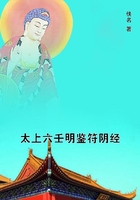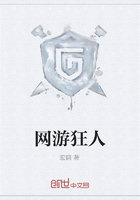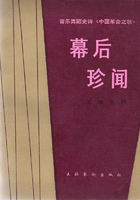It is to be noticed, as a peculiarity of Red Indian totemism which we have not observed (though it may exist) in Africa, that certain stocks claim relations with the sun. Thus Pere Le Petit, writing from New Orleans in 1730, mentions the Sun, or great chief of the Natchez Indians. The totem of the privileged class among the Natchez was the sun, and in all myths the sun is regarded as a living being, who can have children, who may be beaten, who bleeds when cut, and is simply on the same footing as men and everything else in the world. Precisely similar evidence comes from South America. In this case our best authority is almost beyond suspicion. He knew the native languages well, being himself a half-caste. He was learned in the European learning of his time;and as a son of the Incas, he had access to all surviving Peruvian stores of knowledge, and could collect without difficulty the testimonies of his countrymen. It will be seen that Don Garcilasso de la Vega could estimate evidence, and ridiculed the rough methods and fallacious guesses of Spanish inquirers.
Garcilasso de la Vega was born about 1540, being the son of an Inca princess and of a Spanish conqueror. His book, Commentarias Reales, was expressly intended to rectify the errors of such Spanish writers as Acosta. In his account of Peruvian religion, Garcilasso distinguishes between the beliefs of the tribes previous to the rise of the Inca empire and the sun-worship of the Incas.
But it is plain, from Garcilasso's own account and from other evidence, that under the Incas the older faiths and fetichisms survived, in subordination to sun-worship, just as Pagan superstitions survived in custom and folk-lore after the official recognition of Christianity. Sun-worship, in Peru, and the belief in a Supreme Creator there, seem even, like Catholicism in Mexico, China and elsewhere, to have made a kind of compromise with the lower beliefs, and to have been content to allow a certain amount of bowing down in the temples of the elder faiths. According, then, to Garcilasso's account of Peruvian totemism, "An Indian was not looked upon as honourable unless he was descended from a fountain, river, or lake, or even from the sea, OR FROM A WILDANIMAL, such as a bear, lion, tiger, eagle, or the bird they call cuntur (condor), or some other bird of prey ". A certain amount of worship was connected with this belief in kinship with beasts and natural objects. Men offered up to their totems "what they usually saw them eat". On the seacoasts "they worshipped sardines, skates, dog-fish, and, for want of larger gods, crabs. . . . There was not an animal, how vile and filthy soever, that they did not worship as a god," including "lizards, toads and frogs." Garcilasso (who says they ate the fish they worshipped)gives his own theory of the origin of totemism. In the beginning men had only sought for badges whereby to discriminate one human stock from another. "The one desired to have a god different from the other. . . . They only thought of making one different from another." When the Inca emperors began to civilise the totemistic stocks, they pointed out that their own father, the sun, possessed "splendour and beauty" as contrasted with "the ugliness and filth of the frogs and other vermin they looked upon as gods". Garcilasso, of course, does not use the North American word totem (or ote or otem) for the family badge which represented the family ancestors.
He calls these things, as a general rule, pacarissa. The sun was the pacarissa of the Incas, as it was of the chief of the Natchez. The pacarissa of other stocks was the lion, bear, frog, or what not.
Garcilasso accounts for the belief accorded to the Incas, when they claimed actual descent from the sun, by observing that "there were tribes among their subjects who professed similar fabulous descents, though they did not comprehend how to select ancestors so well as the Incas, but adored animals and other low and earthly objects". As to the fact of the Peruvian worship of beasts, if more evidence is wanted, it is given, among others, by Cieza de Leon,
who contrasts the adoration of the Roman gods with that offered in Peru to brutes. "In the important temple of Pacha-camac (the spiritual deity of Peru) they worshipped a she-fox or vixen and an emerald." The devil also "appeared to them and spoke in the form of a tiger, very fierce". Other examples of totemism in South America may be studied in the tribes on the Amazon. Mr. Wallace found the Pineapple stock, the Mosquitoes, Woodpeckers, Herons, and other totem kindreds. A curious example of similar ideas is discovered among the Bonis of Guiana. These people were originally West Coast Africans imported as slaves, who have won their freedom with the sword. While they retain a rough belief in Gadou (God) and Didibi (the devil), they are divided into totem stocks with animal names.
The red ape, turtle and cayman are among the chief totems.
Kip, ii. 288.
Appendix B.
See translation in Hakluyt Society's Collection.
Like many Greek heroes. Odyssey, iii. 489. "Orsilochus, the child begotten of Alpheus." Comm. Real., i. 75.
Ibid., 53.
Ibid., 102.
Ibid., 83.
Cieza de Leon (Hakluyt Society), p. 183.
Acuna, p. 103; Wallace, Travels on Amazon (1853), pp. 481-506.
Crevaux, Voyages dans l'Amerique du Sud, p. 59.















